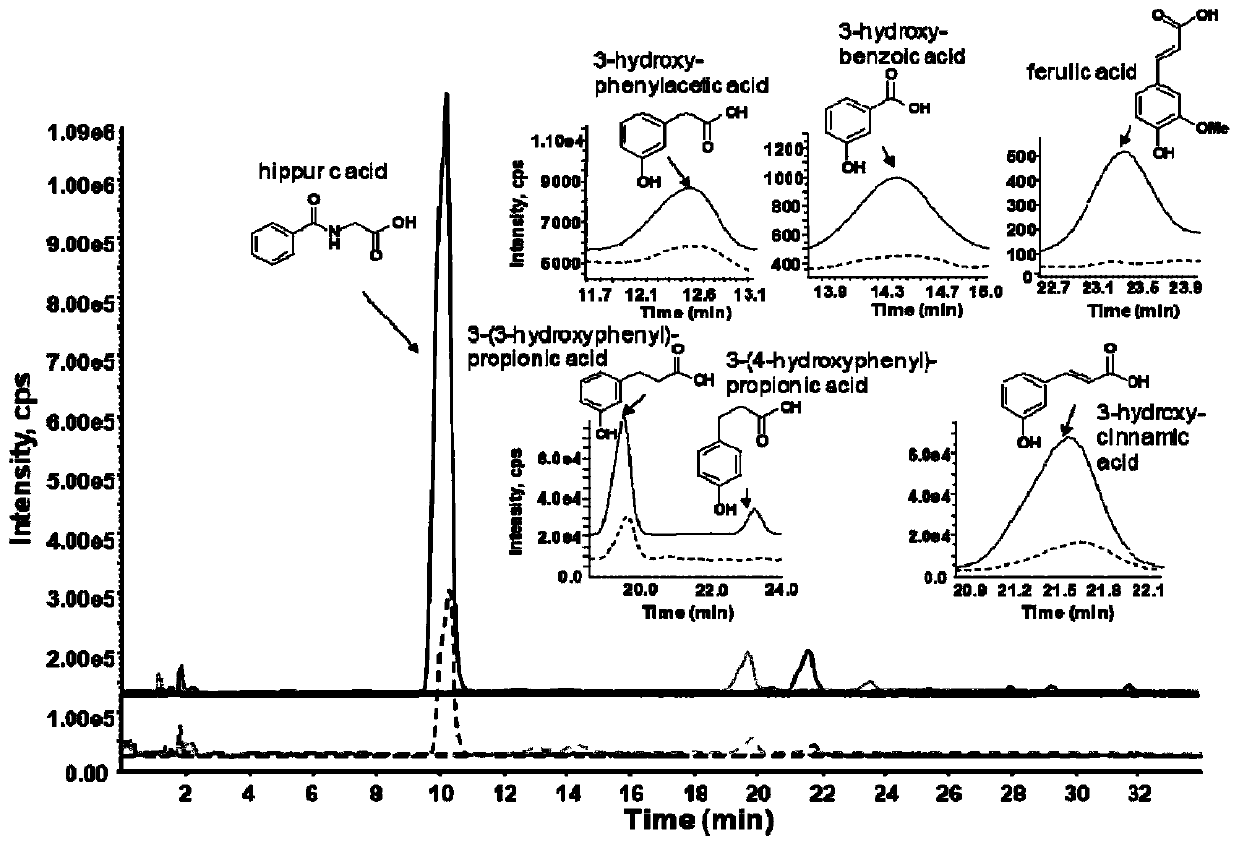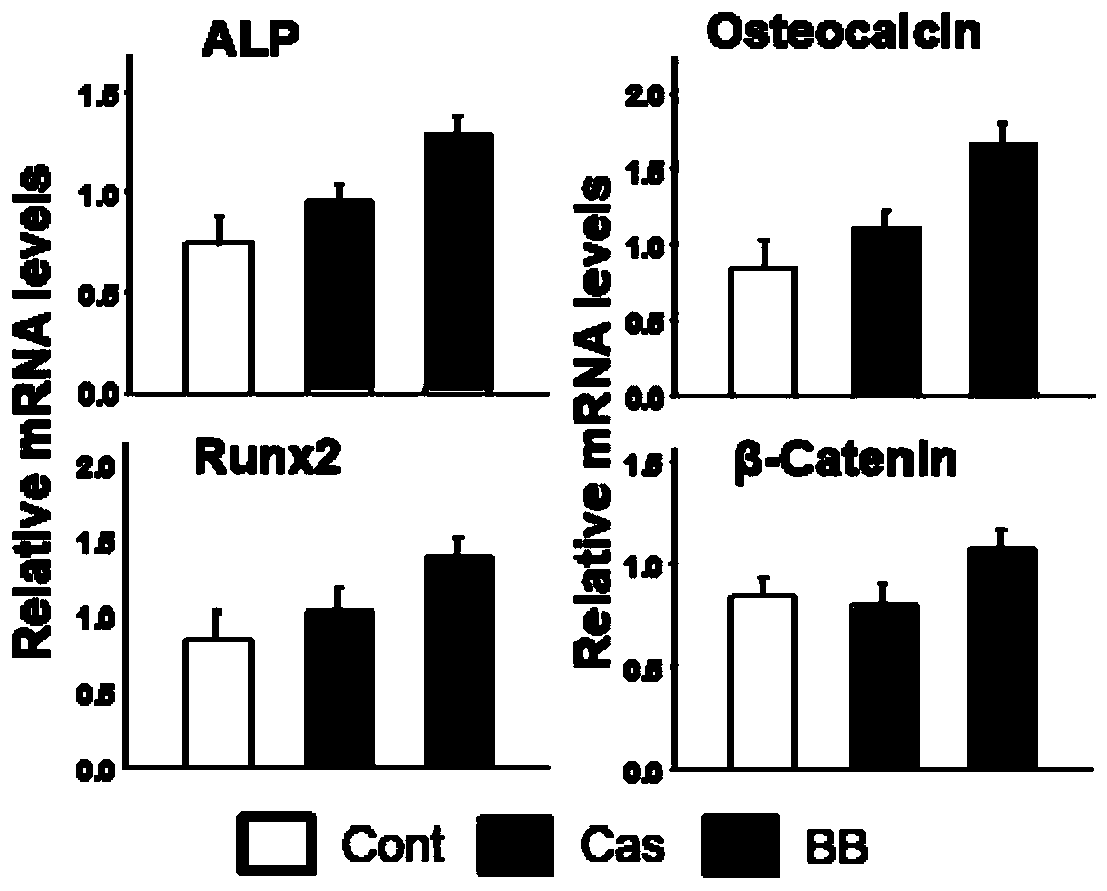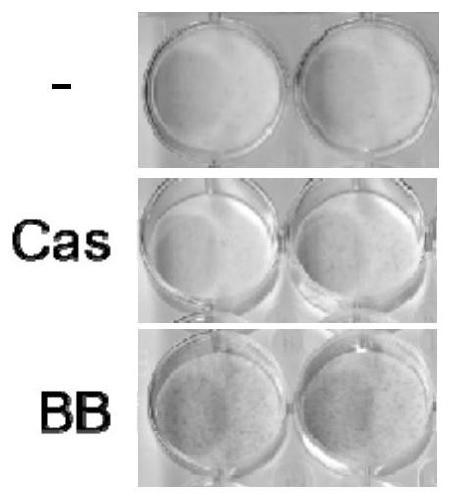Health care food composition capable of increasing bone mass, and application of health care food composition
A technology of health food and composition, applied in application, drug combination, food ingredients and other directions, can solve the problems of low content of active ingredients and unsatisfactory actual effect, etc., to promote differentiation and development, increase bone mass, and promote the expression of osteogenic genes Effect
- Summary
- Abstract
- Description
- Claims
- Application Information
AI Technical Summary
Problems solved by technology
Method used
Image
Examples
Embodiment 1
[0023] Sepp-pak C18 SPE (Waters, Pittsburgh, PA, USA) volumetric tube was used to treat the control group or 10% BB-fed rat serum: the volumetric tube was washed with 3mL methanol, and then balanced with 3mL 0.2% formic acid aqueous solution. Fill the volumetric tube with serum (500 mL). The volumetric tube was rinsed with 3 mL of 0.2% formic acid aqueous solution, and the total phenolic acid was recovered with a 0.2% formic acid-methanol mixed solution. Methanol solution in N 2 Dried under the conditions of, and then dissolved in 200mL 0.2% formic acid-methanol solution for phenolic acid analysis. The Agilent 1100 high performance liquid chromatography system (Agilent Technologies, Santa Clara, CA, USA) and 4000Q TRAP mass spectrometer (Applied Biosystems) were used to characterize and quantify phenolic acids according to the method described above. The study found that the concentration of 7 kinds of phenolic acids in their free form is 6 to 10 times that of the control grou...
Embodiment 2
[0025] The artificial mixture of these phenolic acids was used to treat ST2 cells at the same concentration as the serum concentration of rats on the same BB diet. Compared with control rat cells, the expression of osteoblast formation markers ALP and OCN in serum containing the same concentration of phenolic acid mixture were significantly up-regulated, and Runx2 and b-catenin mRNA were also significantly up-regulated after mixing (p figure 2 ). ST2 and neonatal rat skull cell culture, phenolic acid stimulated osteoblast differentiation (p image 3 ). In summary, at least to a certain extent, the high bone mass of rats fed on the BB diet may be due to the high serum phenolic acid concentration. These phenolic acids come from the polyphenols in the BB diet and are produced under the metabolism of intestinal bacteria or during the first metabolism of the intestinal mucosa or liver.
PUM
 Login to View More
Login to View More Abstract
Description
Claims
Application Information
 Login to View More
Login to View More - R&D
- Intellectual Property
- Life Sciences
- Materials
- Tech Scout
- Unparalleled Data Quality
- Higher Quality Content
- 60% Fewer Hallucinations
Browse by: Latest US Patents, China's latest patents, Technical Efficacy Thesaurus, Application Domain, Technology Topic, Popular Technical Reports.
© 2025 PatSnap. All rights reserved.Legal|Privacy policy|Modern Slavery Act Transparency Statement|Sitemap|About US| Contact US: help@patsnap.com



